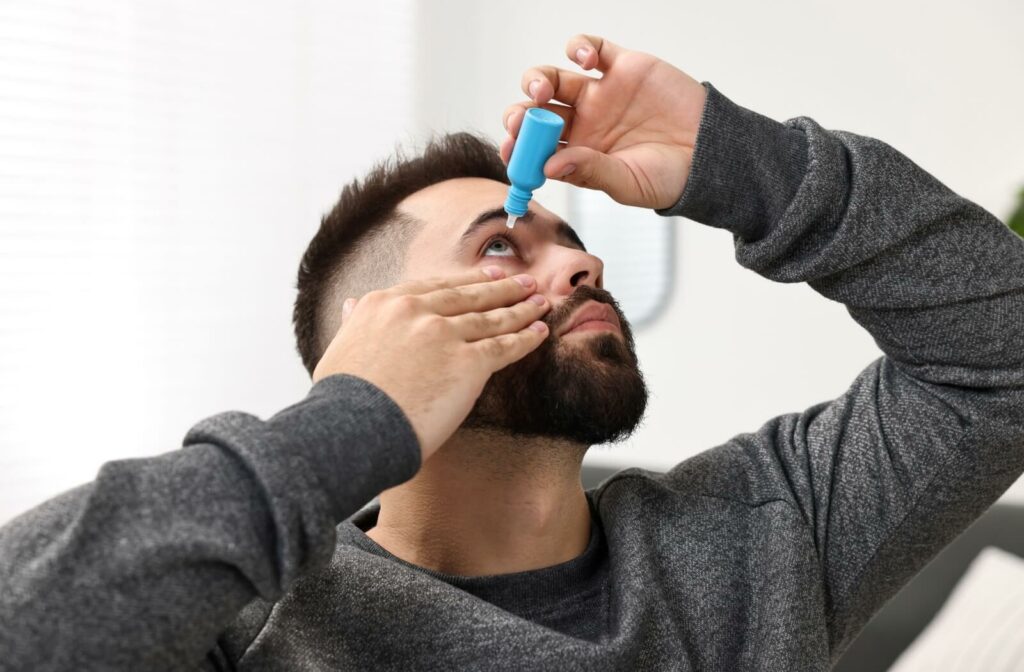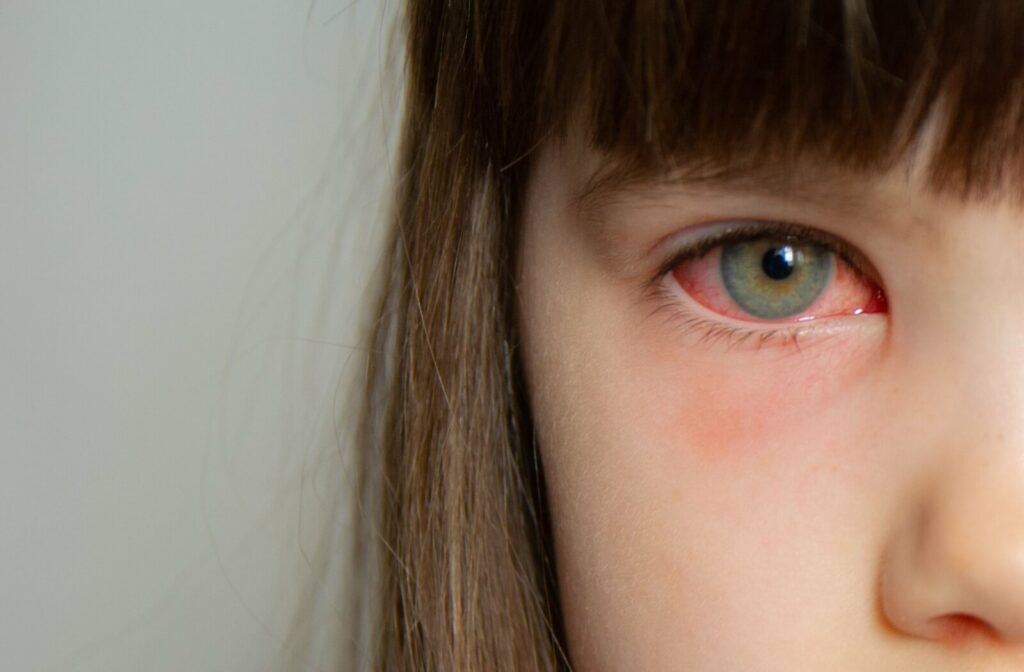Pink eye, also known as conjunctivitis, is a common eye condition that causes redness, irritation, and discharge. While it’s often harmless, its symptoms overlap with other eye conditions, leading to misdiagnosis and improper treatment.
Some conditions commonly misdiagnosed as pink eye include:
- Dry eye syndrome
- Blepharitis
- Uveitis
- Corneal abrasions
- Allergic conjunctivitis
Understanding the differences between these conditions is essential for getting the proper care. If you’re experiencing persistent eye irritation, it’s best to seek professional care from an eye care specialist to determine the correct diagnosis.
What Is Pink Eye?
Pink eye, or conjunctivitis, occurs when the conjunctiva—the thin membrane covering the white of the eye—becomes inflamed. The three leading causes of conjunctivitis include:
- Viral infections (most common and highly contagious)
- Bacterial infections (cause thick, yellow discharge)
- Allergic reactions (trigger watery, itchy eyes)
While pink eye is usually mild, identifying the cause is crucial for proper treatment. However, many other eye conditions can mimic conjunctivitis, leading to confusion.
5 Conditions That Can Be Mistaken for Pink Eye
Dry Eye Syndrome
Dry eye syndrome occurs when the eyes don’t produce enough quality tears, leading to redness, burning, and irritation. Because these symptoms overlap with pink eye, dry eye is frequently misdiagnosed.
How to tell the difference:
- Dry eye usually causes a gritty sensation, while pink eye often feels more like itching or burning.
- Pink eye may involve discharge, whereas dry eye primarily causes excessive watering.
- Long-term relief for dry eye involves lubricating eye drops or lifestyle changes rather than antibiotics or antiviral treatments.
If you’re struggling with persistent dryness, consult an optometrist to explore solutions like artificial tears, prescription eye drops, or punctal plugs.
Blepharitis
Blepharitis is an inflammation of the eyelids caused by bacteria, oil buildup, or skin conditions like rosacea. It often leads to red, swollen eyelids and crusty debris at the lash line, which can be confused with pink eye.
How to tell the difference:
- Blepharitis primarily affects the eyelids, while pink eye causes redness in the white part of the eye.
- Pink eye spreads easily, while blepharitis is not contagious.
- Blepharitis requires eyelid hygiene treatments such as warm compresses and medicated wipes, whereas pink eye treatment depends on the underlying cause.
Uveitis
Uveitis is an inflammation of the uvea (the middle layer of the eye) and is often linked to autoimmune disorders or infections. It can cause severe eye pain, light sensitivity, and blurred vision, which sometimes gets mistaken for conjunctivitis.
How to tell the difference:
- Uveitis often presents with deep, aching eye pain, while pink eye usually causes mild discomfort or irritation.
- Blurry vision is common in uveitis but not in most cases of pink eye.
- Uveitis is a medical emergency requiring urgent treatment with steroid eye drops or systemic medications.
Corneal Abrasion
A corneal abrasion is a scratch on the cornea, often caused by dust, sand, or accidental trauma. The resulting redness and tearing can mimic pink eye, leading to misdiagnosis.
How to tell the difference:
- A corneal abrasion usually follows an injury or a foreign body sensation.
- Unlike pink eye, a corneal abrasion causes sharp pain and light sensitivity.
- Treatment for corneal abrasions includes lubricating drops, antibiotics to prevent infection, and protective eye shields.
Allergic Conjunctivitis
Allergic conjunctivitis occurs when allergens (such as pollen, pet dander, or dust) trigger an inflammatory response in the eyes. The itching and redness can resemble infectious pink eye, leading to confusion.
How to tell the difference:
- Allergic conjunctivitis affects both eyes equally, whereas viral or bacterial pink eye often starts in one eye.
- Pink eye may produce thick discharge, while allergies primarily cause watery, teary eyes.
- Allergic conjunctivitis often occurs alongside sneezing and nasal congestion, which don’t accompany infectious pink eye.
Treatment typically includes antihistamines or allergy eye drops, rather than antibiotics or antiviral medications.

How to Avoid a Pink Eye Misdiagnosis
Getting the right diagnosis is key to proper treatment. Here’s how to reduce the risk of misdiagnosing pink eye:
Consult an Optometrist
An eye exam can help determine whether your symptoms are caused by pink eye or another condition. Optometrists use specialized tools to examine the eye under magnification, making it easier to identify subtle differences between conditions.
Consider Your Symptoms Carefully
Take note of additional symptoms like pain, blurry vision, or excessive tearing. Conditions like uveitis or corneal abrasions often come with more severe discomfort than pink eye.
Pay Attention to Discharge
- Thick, yellow-green discharge is likely bacterial pink eye.
- Watery, clear discharge could be viral pink eye or dry eye.
- No significant discharge may be due to dry eye or allergies.
Be Aware of Allergies & Recent Illnesses
If you have a history of allergies, your red, itchy eyes could be a reaction rather than an infection. Similarly, viral pink eye could be the culprit if you’ve recently had a cold or flu.
Seek immediate help for severe symptoms. If you experience intense pain, vision changes, or extreme light sensitivity, seek emergency care. These symptoms may indicate a serious eye condition requiring urgent treatment.
Protect Your Eye Health with a Professional Diagnosis
While pink eye is common, other eye conditions share its symptoms and require different treatments. By understanding the key differences, you can take the right steps to care for your eyes and get the correct treatment.
If you’re experiencing persistent redness, discomfort, or vision changes, don’t wait—schedule an appointment with Eye Effects today. Getting an accurate diagnosis ensures you receive the best care for your vision and overall eye health.


